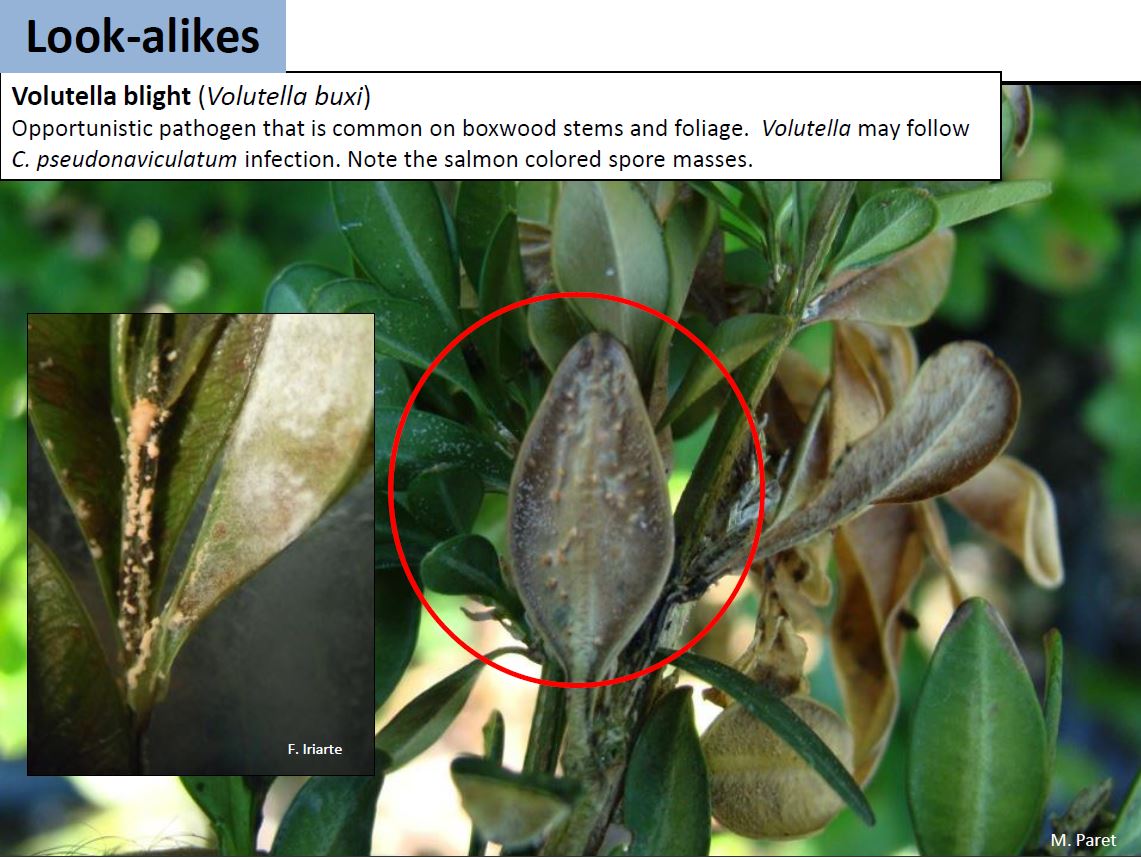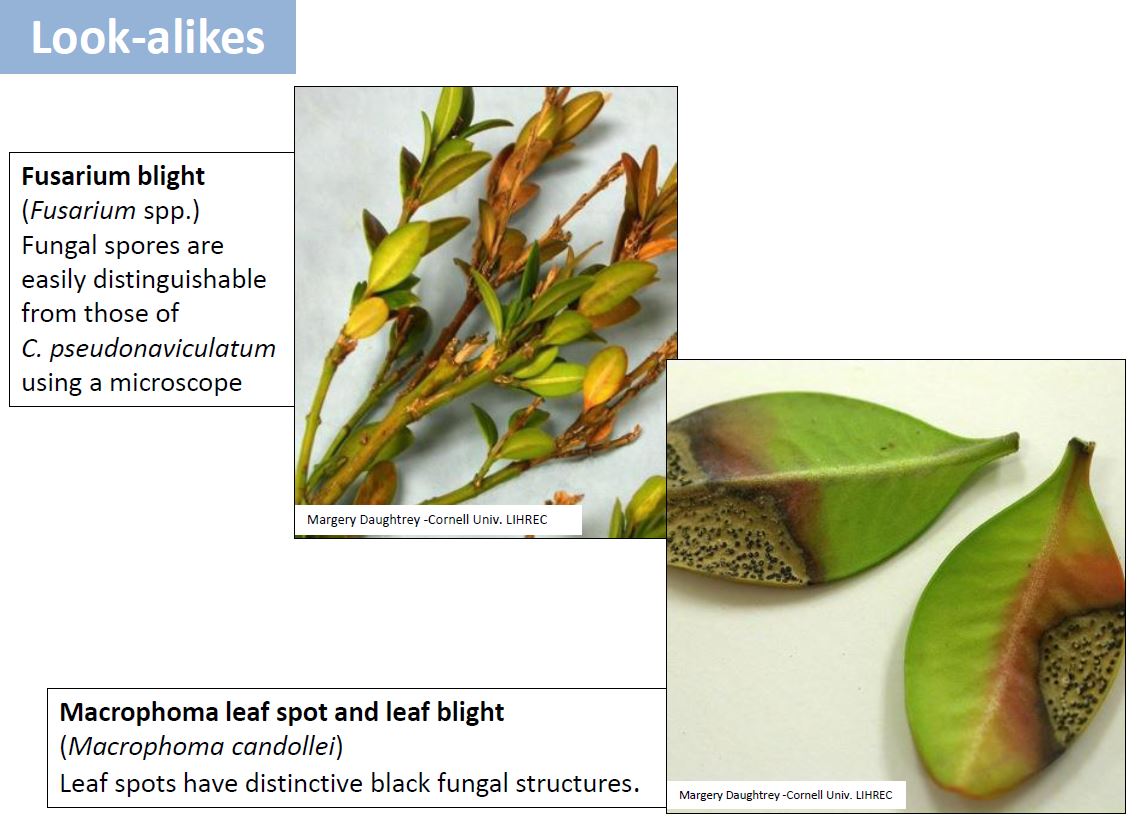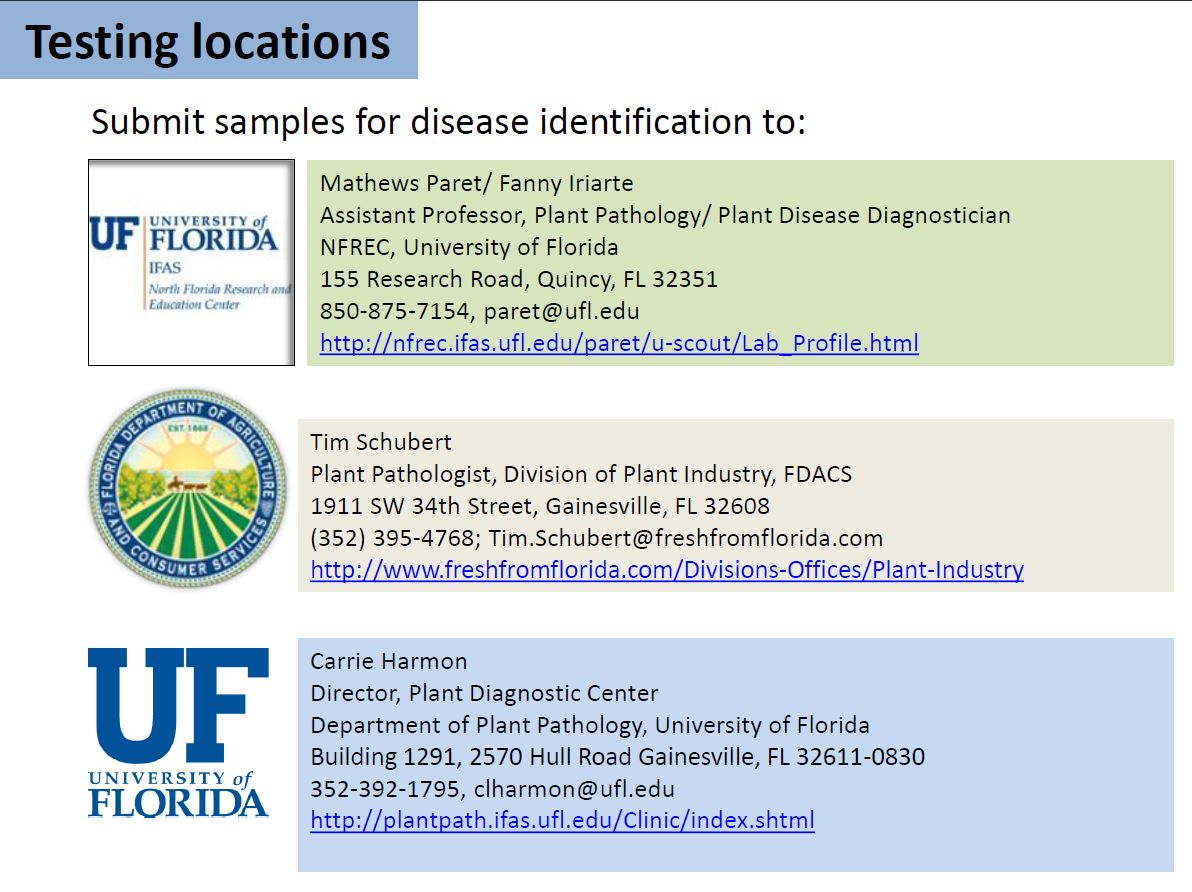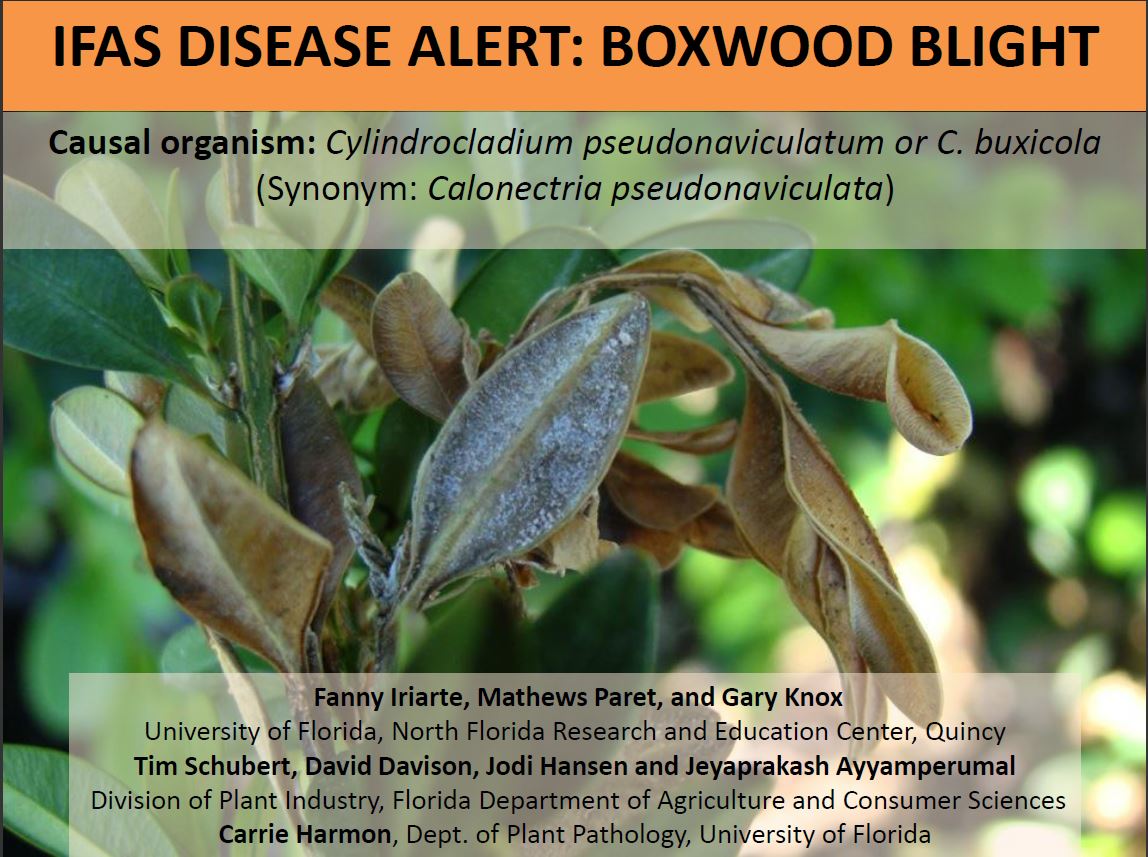 Fanny Iriarte, Mathews Paret, and Gary Knox
Fanny Iriarte, Mathews Paret, and Gary Knox
University of Florida, North Florida Research and Education Center, Quincy
Basic Information
- Boxwoods (Buxusspp.) are commercially important evergreen ornamental plants with an annual market value of over $103 million in the United States.
- The first confirmed reports of Boxwood blight in the U.S were from Connecticut and North Carolina in November 2011, followed by confirmation in numerous states since then.
- In Florida, Boxwood blight was discovered in April 2015 in a commercial nursery in North Florida by the University of Florida, NFREC Plant Diagnostic Clinic and the Division of Plant Industry, FDACS. The disease was on liners of Common boxwood (B. sempervirens)and ‘Green Velvet ‘ (B. sinica var. insularis x B. sempervirens ‘Suffruticosa’) cultivars shipped from Oregon.
- Spread outside the Florida nursery has not been reported. No other occurrences have been detected/reported in the area as of May 18th, 2015. Shipment trace-forwards by DPI are underway. DPI and the nursery are currently implementing strategies to eradicate the pathogen from the location.
- Nursery personnel should be aware of the symptoms of boxwood blight and monitor plants in the nursery and landscape routinely.
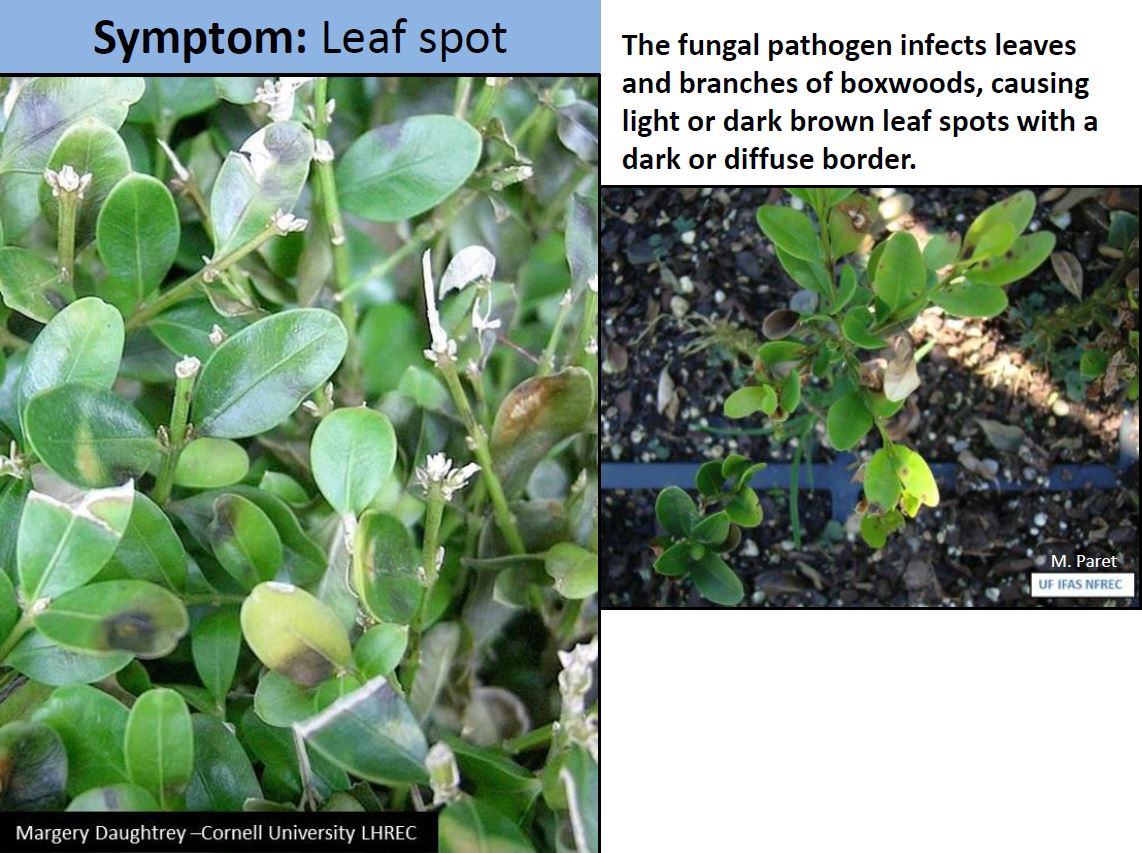 Epidemiology
Epidemiology
- The pathogen spreads by wind-driven rain or splashing water over short distances and is most infective during conditions of high humidity.
- The range of spore dispersal by wind or air currents is not known. It is believed to be short distances.
- Long-distance spread of this disease occurs via movement of infected plants, infected plant debris, soil or equipment.
- Spores also may be spread by insects.
- The pathogen has been found to survive in leaf debris placed either on the soil surface or buried in the soil for up to 5 years.(Henricot, B. 2006)
- C. pseudonaviculatum is primarily a foliar pathogen that causes only above-ground symptoms. However, research has shown that spores can remain viable in soil for up to 3 weeks, and microsclerotia for at least 40 weeks. (Norman L. Dart. et.al.-Virginia Department of Agriculture).

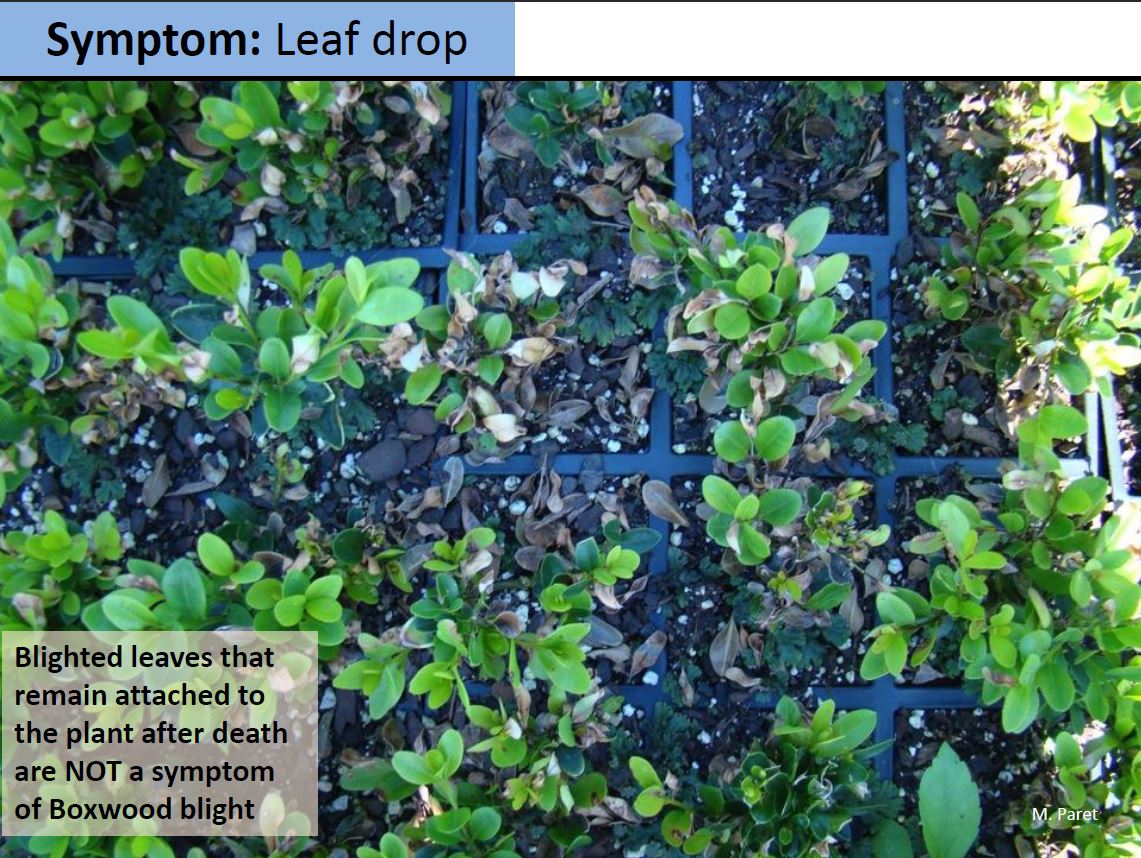
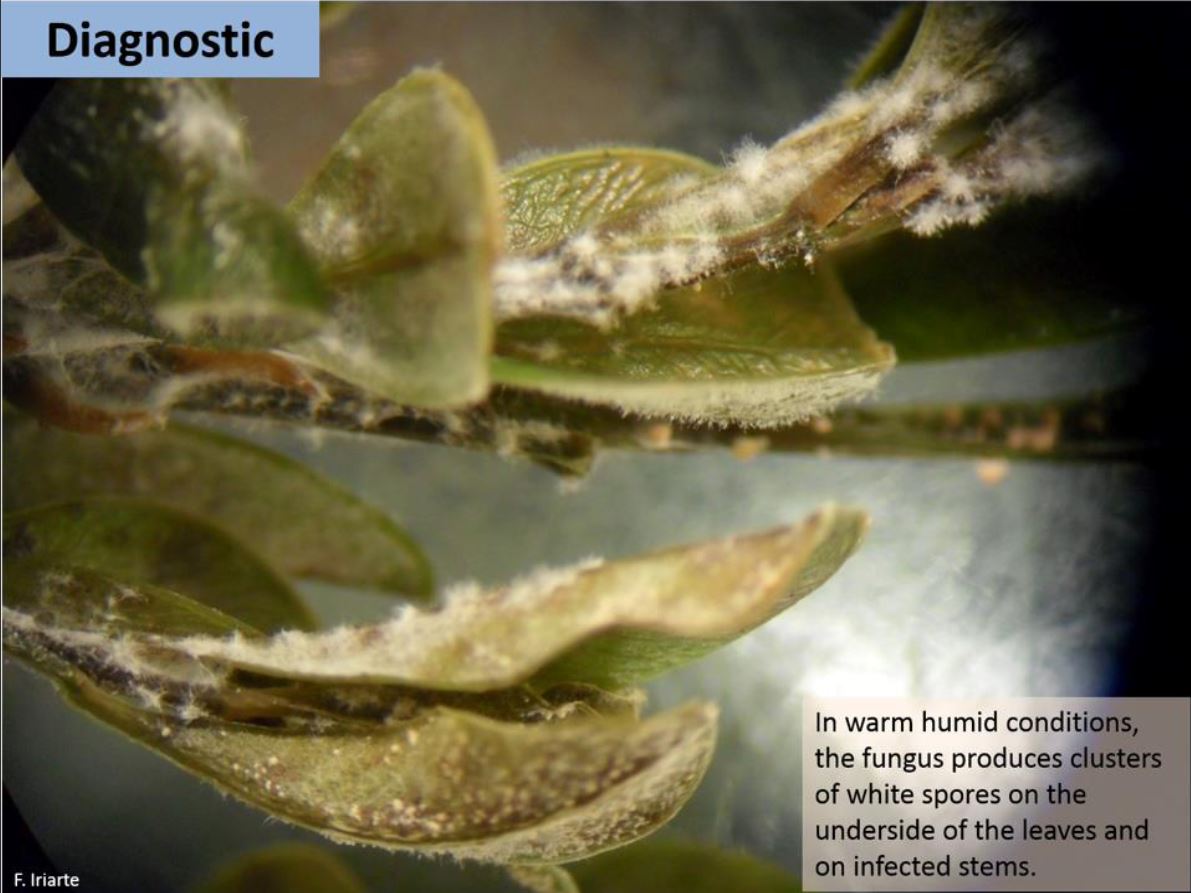 Management
Management
- Use only reliable sources of liners/plant material.
- Inspect plants for black leaf spots, black cankers or leaf drop before purchase.
- Disinfest pruning tools between groups of plants.
- Do not bring in cuttings, clippings or mulch that might contain diseased boxwood material.
- Consider using less-susceptible boxwood varieties and growing them in full sunlight with good ventilation.
- Routinely inspect all incoming boxwood material for symptoms and closely monitor them for symptom development. Isolate new plant material for at least three weeks.
- Keep in mind that asymptomatic boxwood plants or cuttings can harbor the pathogen.
- Asymptomatic cultivars with less susceptibility can become “Trojan Horses”, introducing the pathogen to other valuable cultivars.
- If you detect symptoms of boxwood blight, immediately have your plants tested. Remove and discard (burn) infected plant material to avoid spread of the pathogen to healthy plants.
- Routinely inspect boxwood in the landscape, on the nursery grounds, and in the surrounding area for boxwood blight.
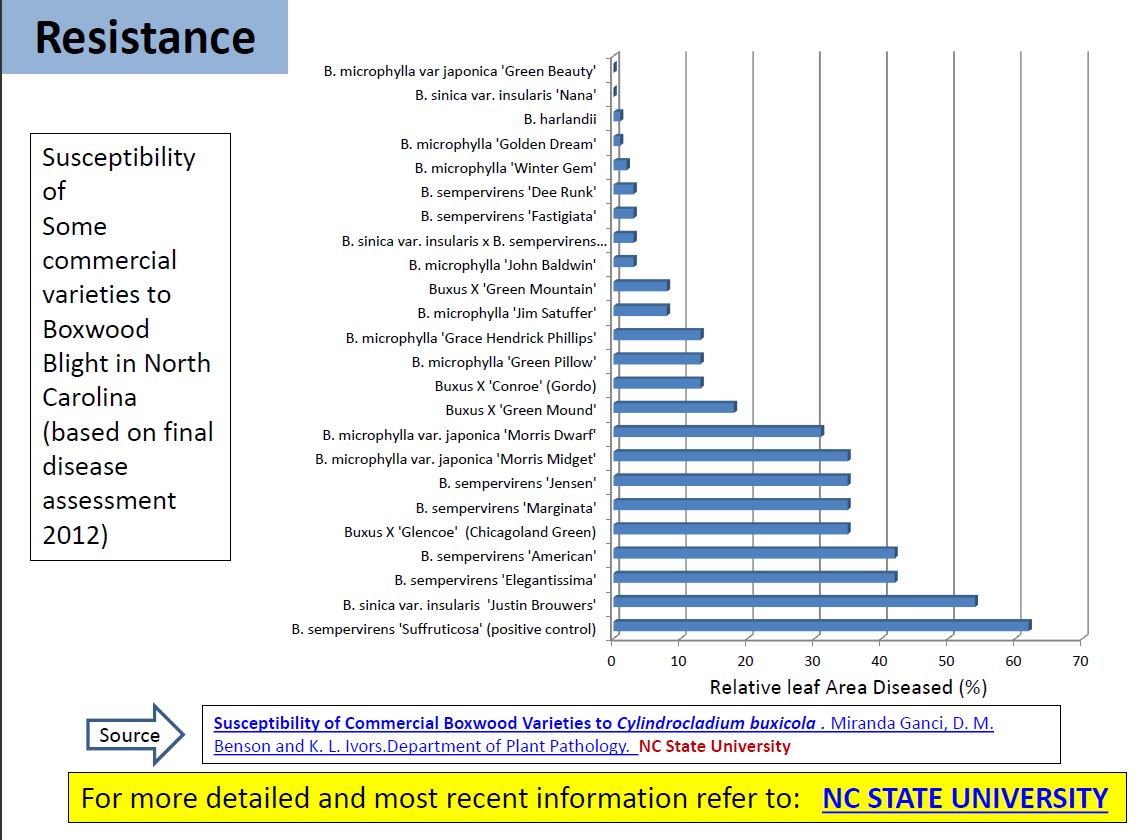
Source: Susceptibility of Commercial Boxwood Varieties to Cylindrocladium buxicola . Miranda Ganci, D. M. Benson and K. L. Ivors.Department of Plant Pathology. NC State University
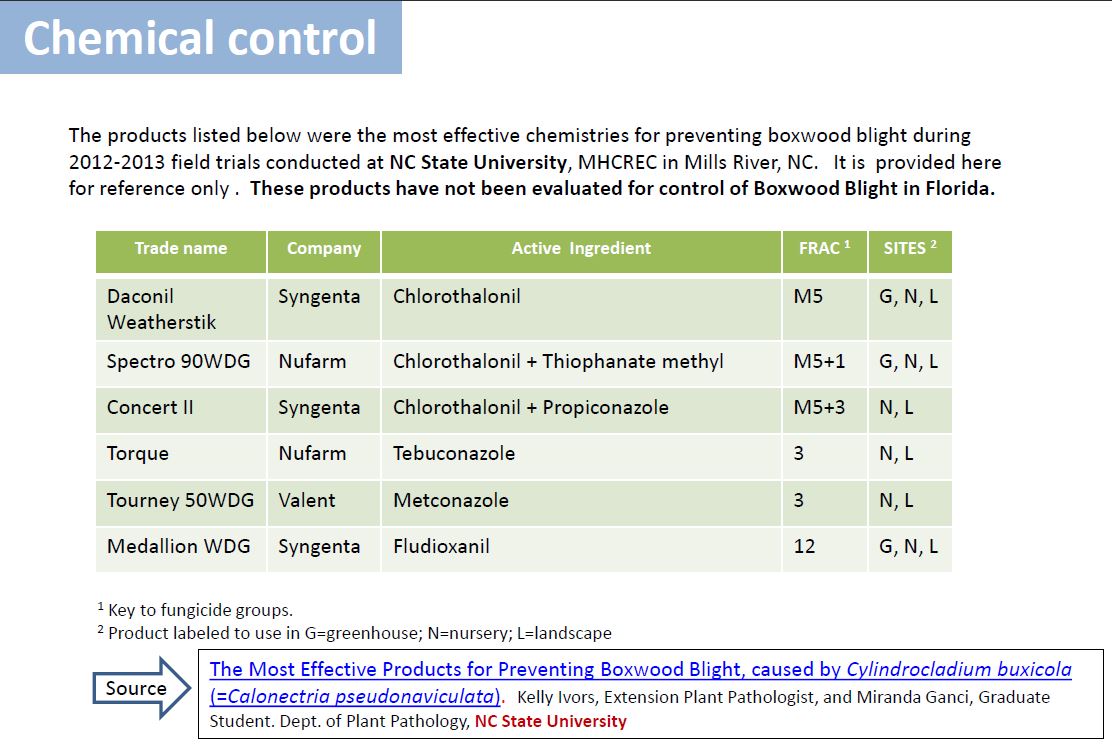
Source: The Most Effective Products for Preventing Boxwood Blight, caused by Cylindrocladium buxicola (=Calonectria pseudonaviculata). Kelly Ivors, Extension Plant Pathologist, and Miranda Ganci, Graduate Student. Dept. of Plant Pathology, NC State University
Look-a-like Diseases
More Information on Boxwood Blight
Nursery Industry Voluntary Best Management Practices for Boxwood Blight
Latest posts by Fanny Iriarte (see all)
- Citrus Greening (HLB) Update for North Florida and Georgia - December 17, 2021
- Hemp Diseases in North Florida - March 19, 2021
- NFREC Plant Disease Diagnostic Clinic in Quincy Reopens with Limited Hours - April 17, 2020

